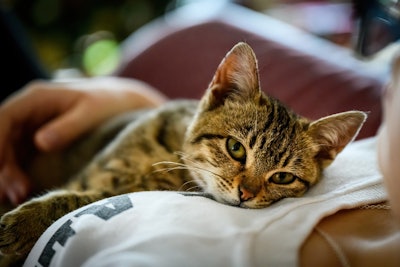
The number of households with pet cats is increasing, and cat owners are ready to be heard. According to a recent report from Packaged Facts, Cats: U.S. Pet Market Trends and Opportunities, despite cost concerns, the movement toward alternative forms of superpremium pet food is well underway, with fresh (refrigerated and/or frozen) and freeze-dried pet food leading the charge.
When it comes to fresh cat food, however, survey results suggest that cat owners remain unhappy with their available options. Although fresh cat food hasn’t reached the same level of uptake as fresh dog food, minimally processed frozen and refrigerated products appeal to cat owners seeking ultra-premium products that resemble what they would feed themselves.
Treats are another area where cats have less options. Although many marketers offer cat treats, historically the selections have been less robust than for dogs, and some cat food marketers have ignored cat treats completely, stated the report. Reasons for this include the higher rate of dog ownership and dogs being more lucrative in terms of sales since they consume more.
It's more than just cat food
For pet parents, their pet's preference is the greatest influence on pet food purchases. This is especially true for cat owners, noted Packaged Facts. Given the economic environment of the past several years, pet owners are on the lookout for deals, and have in some cases been trading down to lower cost products including private labels. The survey results, however, showed that among cat product purchasers, the greatest share increased their spending on pet food in 2024 compared to the previous 12 months.
The report also stated that cat owners in particular see pet food as more than a necessary staple but as holding a premier role in their pets' health. With traditional kibble and canned/wet natural pet food mass-marketized, the superpremium cat food segment is seeing an influx of functional and science-based diets.
The report also noted usage rates for traditional dry dog and cat food have been flat, while usage rates for traditional wet pet food have edged up.
Wet pet food is more expensive than dry foods due to the moisture content and need for more extensive packaging. As such, pet owners looking to cut back may decide to minimize the amount of wet food feeding they are doing. Economic sluggishness aside, wet pet food appears likely to advance quite a bit further.
Packaged Facts' data for this report was sourced from primary and secondary research, including a January 2024 survey of 1,600 U.S. pet owners and MRI-Simmons' Winter 2023 survey of 50,000 consumers, both representing a cross-section of the U.S. population. The primary research also involved interviews with pet market experts, participation in industry events, and onsite and online evaluations of retail and service venues.


















